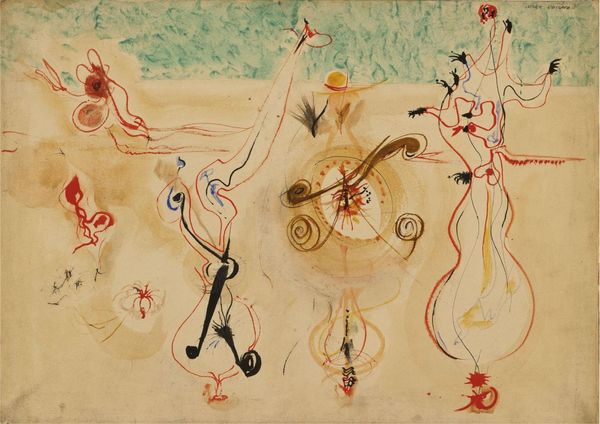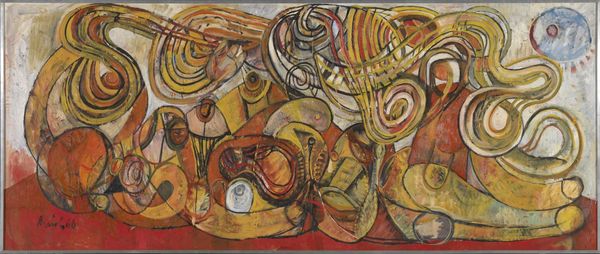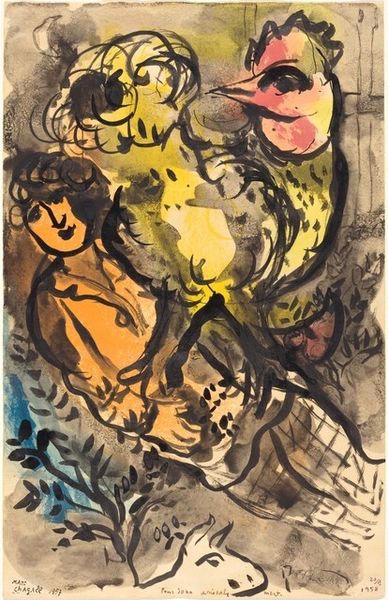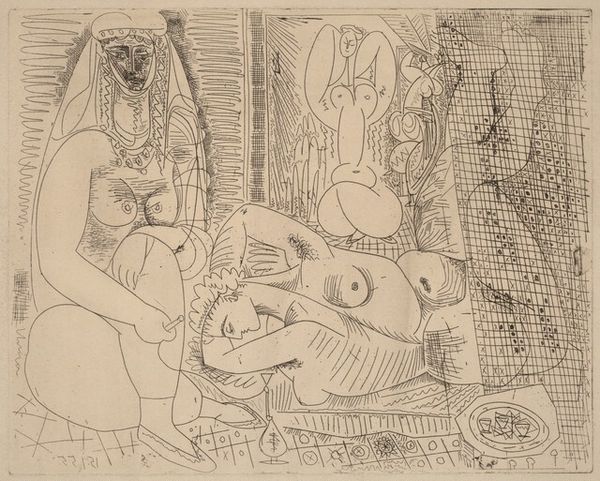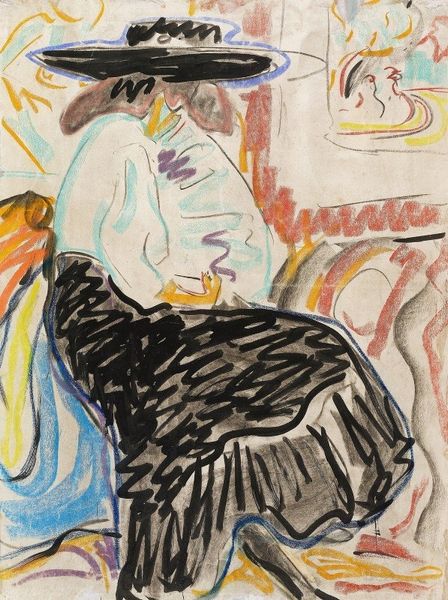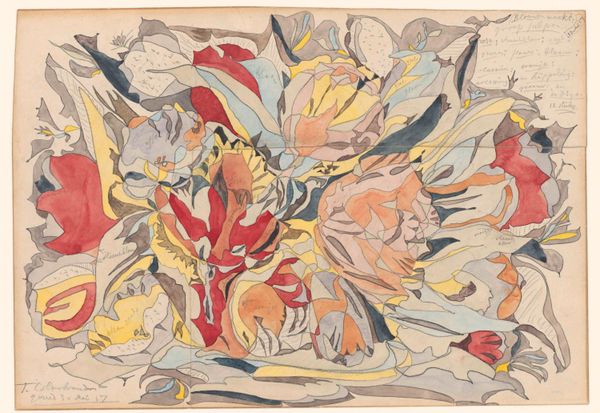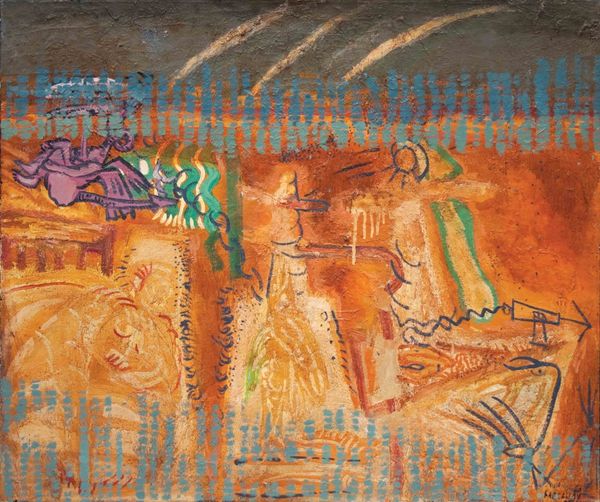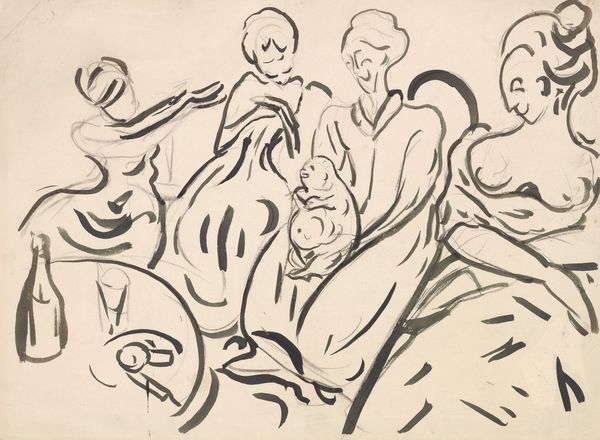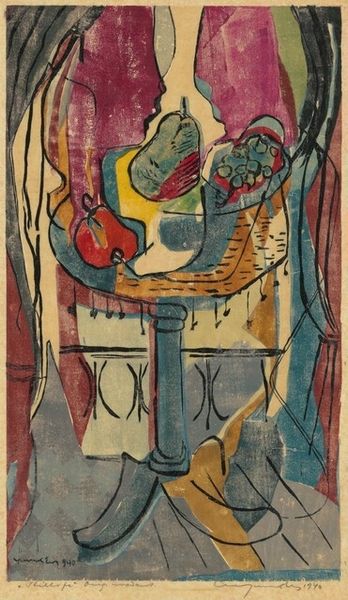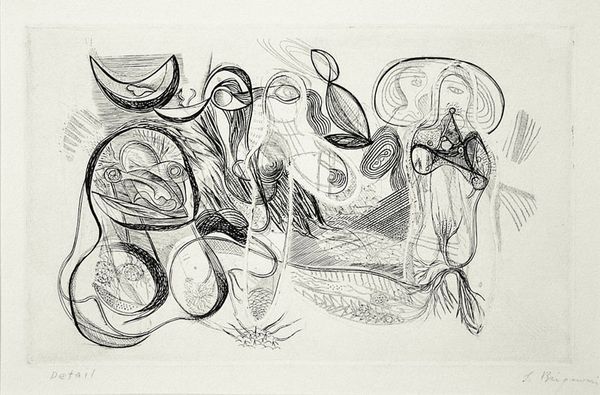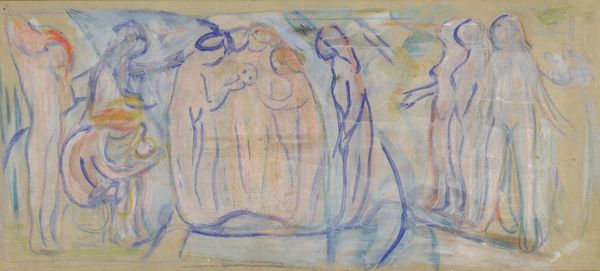
drawing, painting, watercolor
#
abstract-expressionism
#
drawing
#
organic
#
abstract painting
#
painting
#
form
#
handmade artwork painting
#
watercolor
#
biomorphic
#
abstraction
#
line
Dimensions: overall: 100.3 x 135.9 cm (39 1/2 x 53 1/2 in.)
Copyright: National Gallery of Art: CC0 1.0
Curator: Ah, here we have Mark Rothko's "Birth of Cephalopods" from 1944. It’s a watercolor and drawing, quite unlike his later, more famous works. Editor: Immediately, I'm struck by its ethereal quality. The shapes are so fluid, almost like observing organisms through a microscope. The color palette has something childlike in its simplicity, too. Curator: It is surprising, isn't it? He's reaching for something primordial, delving into the very genesis of life. Notice how these biomorphic shapes suggest nascent forms struggling to define themselves, the vibrant yet fragile beginnings. It echoes Miró or even Masson, a similar engagement with Surrealist biomorphism. Editor: I’m curious about the title, "Birth of Cephalopods." It conjures images of evolution and origins, yet also speaks to a hidden language beneath the surface. Do you feel it’s that direct? Rothko and cryptic titles rarely align. Curator: Perhaps "birth" is symbolic here—a genesis of color, form, or even feeling itself. His titles often act as evocative springboards, suggesting broader realms. To think of cephalopods suggests primordial consciousness, perhaps? His employment of symbolic systems in that sense almost betrays an iconographical approach to rendering ideas and emotional information into the visible plane. Editor: That is fascinating, because I was almost ready to dismiss it as whimsical and airy. The delicate lines and gentle washes have a lightness that can be deceiving. But you're right, there's a definite underlying current, like an unfolding drama shrouded in gentle pastels. There’s the sense of a visual riddle, but a playful one. The more you ponder the more you have a glimpse of something universal. Curator: Yes! These tentative forms may represent primal drives and creative forces struggling to take shape. "Birth of Cephalopods" offers us a chance to peer into a realm of boundless potential, of embryonic life poised on the cusp of existence. It suggests something fundamental. Editor: Looking at this artwork makes you think that underneath apparent simplicity there is hidden symbolism that transcends time, just as art and its ability to provoke, makes an individual into an explorer of themselves, of history, of what lies beneath the obvious. Curator: Indeed, Rothko pulls back the curtain ever so slightly so we may imagine what it is to arrive. What potential blooms there for all of us?
Comments
No comments
Be the first to comment and join the conversation on the ultimate creative platform.


